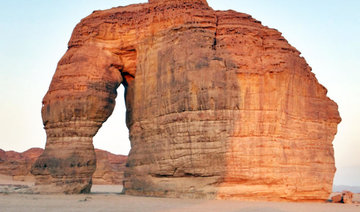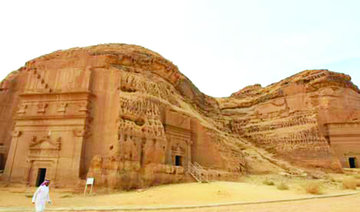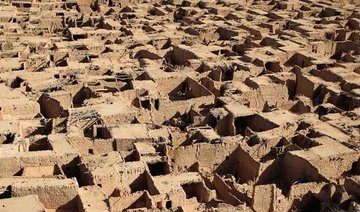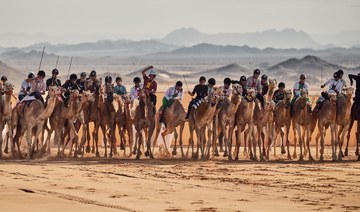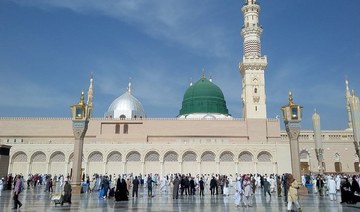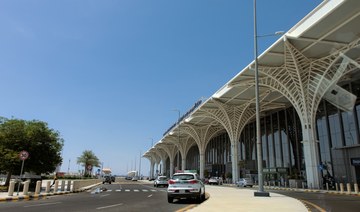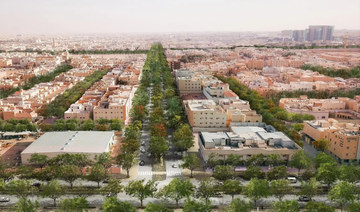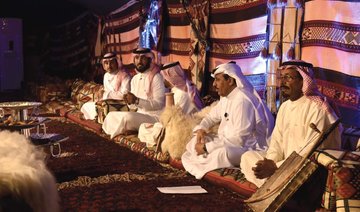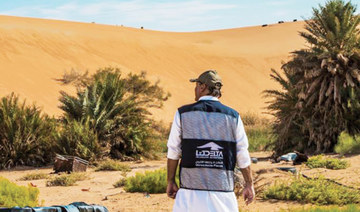PARIS: Dominican monks from France explored Mada’in Salih more than a century ago.
It has been a fruitful few days for Saudi-French cultural relations, with the official visit of Crown Prince Mohammed bin Salman heralding the signing of several co-operation agreements ranging from setting up a national opera to developing tourism around archaeological sites.
But France’s links to Al-Ula, in northwest Saudi Arabia, go back much farther than the establishment of the Royal Commission for Al-Ula (RCU) eight months ago. Archaeologist Dr. Laila Nehmé began working with Saudi colleagues in 2002 and is co-director — with Saudi archaeologist Dr. Daisallah Talhi — of the Saudi-French excavation program at Madain Saleh.
Hers was the first foreign team since the 1970s to be allowed to work in the country. “And it was led by a woman! But we never had any problems with the Saudis. They would do anything to help us. They are our friends,” she told Arab News.
But Nehmé explained she is following in the footsteps of Frenchmen Antonin Jaussen and Raphael Savignac, who first explored Madain Saleh more than a century ago, in 1907.
The two men were Dominican monks from the French Biblical School in Jerusalem and both had a passion for archaeology.
Their five-volume “Mission Archaeologique en Arabie” became the standard reference work on Middle Eastern archaeology and was translated into Arabic.
“Those two Dominican fathers really started the relationship,” said Nehmé.
In the late 1990s, a small group of French academics began making contacts with Saudi counterparts through meeting them at international conferences. At the time, Saudi Arabia wanted Madain Saleh to be accorded World Heritage site status by UNESCO and sought help from the French.
“These relationships are built up over time,” said Nehmé, who is also senior research fellow at the French National Center for Scientific Research in Paris and has worked in Petra and on archaeological sites in Syria.
The existing settlements of Al-Ula, Al-Atheeb and Moghairah can already cater for visitors but are ripe for immediate development. They also offer access to only 2,000 square kilometers, a fraction of Al-Ula’s total area.
“There are also some nice hideaway resorts. It is possible to stay in Al-Ula in comfort already, but a hotel is much more than just a bed,” said Al-Madani. “We need better gastronomy and we intend to recruit chefs from all over the world. We need nightlife, performance, art, night walks. We don’t want to simply meet standards, we want to elevate them and set them for others to follow.”
A local airport opened four years ago and there are good roads; but improving public transport is another part of the project, along with linking up with plans for holiday resorts on the Red Sea, so visitors can spend time exploring the historic sites and follow up with a few days on the beach. The potential openings for anyone with the required skills, or the motivation to acquire them, seem almost limitless — a fact not lost on the young people of Al-Ula province. More than 2,100 people out of a local population of 70,000 applied for those 200 traineeships.
The chosen candidates will spend three to six months at college in Riyadh while careers advisers and psychologists assess their abilities and where they might be best applied.
“Then they will be sent out into the world, to improve their languages, to learn how to be independent,” said Al Madani.
Young girls and boys sent out into the world to be independent? It is not the picture most outsiders have of Saudi Arabia. The change in perception, the big plans, the breath-taking ambition of Vision 2030, all emanate from the country’s youthful crown prince.
“This is a new era for Saudi Arabia and it all comes from him,” said Al-Madani. The Al-Ula project, too? “Everything.”
A graduate of Harvard Business School, Al-Madani has 15 years’ experience in discovering and nurturing innovation. He is also a former chief executive of the General Entertainment Authority, the body charged with bringing cinema, live performances and sporting events back to the Kingdom.
But he talks about Al-Ula with such zeal that Amr Al-Madani truly gives the impression that he believes he has the best job in town — any town.
Certainly, re-introducing Al-Ula to the world is a bigger task than introducing the world to Al-Ula.
“Many centuries ago,” Al-Madani says, “Al-Ula was already used to seeing people from all over; Al Ula was global long, long ago.”
Depth of ties: A long history of French archaeology in Saudi Arabia
https://arab.news/yzxgx
Depth of ties: A long history of French archaeology in Saudi Arabia
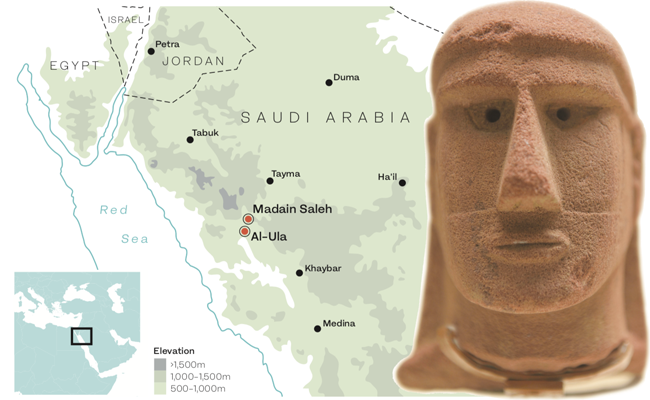
- Saudi-French excavation program at Madain Saleh started in 2002
- Two Dominican monks were the first French to explore Madain Saleh
Swizz Beatz gearing up for second round of AlUla Camel Cup
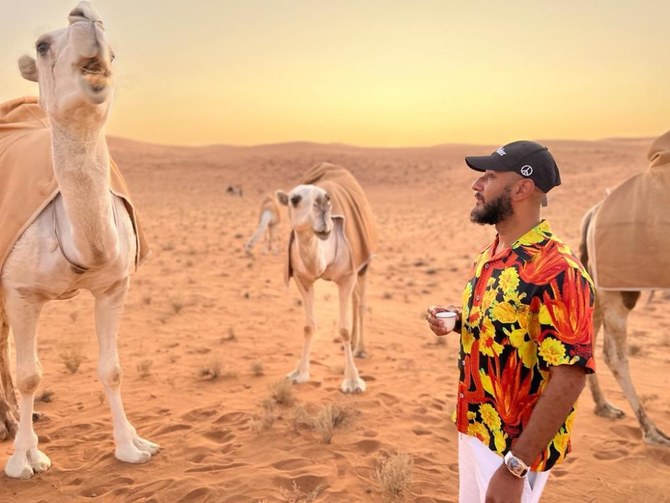
- Swizz Beatz: I feel like they might not know my music, but they definitely know the Saudi Bronx and it’s kind of amazing that I had a new identity in a whole new field in a whole new country
- Swizz Beatz: To be the first outside of the GCC to own a team in the entire federation … that will forever be in history; you cannot erase that
DHAHRAN: The “ships of the desert” will start racing on Wednesday, April 24, when the second AlUla Camel Cup takes off. At the race this year will be a familiar face: Swizz Beatz, the first and only American owner of a camel racing team in Saudi Arabia. He will, once again, be participating in what is deemed the “world’s most prestigious camel racing event,” which ends on April 27.
Born Kasseem Daoud Dean and known professionally as “Swizz Beatz,” the American record producer and rapper joined the camel-racing world five years ago and hasn’t looked back. His team’s name, Saudi Bronx, which is also a brand offering clothing and accessories, is inspired by his hometown in New York’s South Bronx and Saudi Arabia.
“I'm having fun with it,” Swizz Beatz told Arab News ahead of the race. “Anything that I’m having fun with is easy for me to do. And then on top of that, we got over 20-something trophies.
“The fact that we’re even in the AlUla Cup is major because that means that we have four chances to do some big things.”
Wanting to participate in the race does not grant one an automatic shoo-in, celeb or not. There is a rigorous process and strict criteria to qualify.
“We can’t just apply for this race; they have to pick camels based on speed and based on rankings and things like that,” he explained.
This year, the UN and the Ministry of Culture both designated 2024 as The Year of the Camel, highlighting the cultural and civilizational significance of the majestic animal.
This special focus adds a new cultural dimension to the event, marking AlUla as a must-visit destination to celebrate and honor the camel. It will showcase the best of the best as the animals race for speed, the jockeys demonstrate skill and everyone honors tradition.
“The journey has been very educational, very humbling. It’s a glimpse into something that has been such a pillar in (Saudi) heritage that it’s just awesome to see,” Swizz Beatz continued.
As with the previous edition, this year’s event will also be organized by the Royal Commission for AlUla in partnership with the Saudi Camel Racing Federation.
“The AlUla Camel Cup stands proudly as the pinnacle of camel racing and has assumed a starring role in elevating AlUla’s regional and global standing as a premier heritage sports destination,” Ziad Al-Suhaibini, RCU’s chief sports officer, said.
Taking place at AlUla’s Mughayra Heritage Sports Village, the four-day event will feature the region’s fastest camels and most talented riders across several rounds of competition. There will be substantial prize pots and AlUla Camel Cup champion trophies up for grabs.
Camel racing, which dates to the 7th century, is an ancient heritage sport woven into the fabric of the local culture.
“There’s nothing that I need to change with them; they’ve been bringing home the magic,” Swizz Beatz said of his camel racing trainer, Hamed, and his team.
When asked what was different this time around, he replied: “I just think that we’re more prepared this time.”
The Saudi Bronx merch store will also be stocked with fresh drops.
“We just wanted to have something for the brand (so) that even if people can’t come to the race, they can represent,” he said. “People go crazy over the Saudi Bronx hoodies and stuff like that. Last year was a very small setup, which was cool because everybody was just starting,” he said.
This year’s AlUla Camel Cup is expected to be the most spectator-friendly race, thanks to the freshly formed Royal Pavilion and the expansive Heritage Village.
Workshop sessions will be available throughout the four days, with enriching sessions centered on calligraphy, traditional pottery-making, Sadu weaving, and bakhour, or incense. Children will be able to ride camels, create camel origami and clay models, and use augmented reality to bring their imaginative camel creations to life.
Last year, the races attracted 2,550 visitors and created a flurry of posts on social media.
“My kids are very into culture — period. We travel and they’ve been here (to the Kingdom),” Swizz Beatz shared.
He credits his children with motivating him to pursue his goals. They influence his moves, he said, but he also aims to do the same for them.
“I teach them to believe in their vision. Even if no one is able to comprehend it at that moment, you might be ahead of your time. I also am influenced to show them different things and to step outside of the box because a lot of people were laughing at me (for owning a camel racing team) … The same people (now) want to come to a race,” he said.
He sees being part of the camel-racing world as a way to “give back to the people,” pay homage to the locals, and combine all of his passions; family, fun, music, movement, culture, and a fresh experience steeped in history and nostalgic vibes.
Swizz Beatz, who usually brings his family along, will come solo this time. His wife, superstar Alicia Keys, will stay behind in New York to tend to the recent opening of her Broadway show based on her life, “Hell’s Kitchen.”
He has been adamant about showcasing his trips to the Kingdom on his social media platforms. Unlike many American stars who have only recently parachuted into AlUla either for work or pleasure, his family has a long history with the Kingdom.
“The journey (into Saudi Arabia) for me has been very natural. My grandfather went to Makkah in the 1970s. Back then, my grandfather also managed (boxing legend and cultural icon) Muhammad Ali,” Swizz Beatz told Arab News.
He hopes to take that same trip alongside his grandfather soon.
“I haven’t been to Makkah. I’m planning on taking my grandfather because he’s been with me about it and because I didn’t want to do the trip without him. Inshallah, we have to do that this year. He’s not getting younger,” he said.
After earning recognition for his other projects, which granted him celeb status in the US and even within the Kingdom, Swizz Beatz is excited about this new chapter in his life.
In AlUla, the camel-racing community knows him as one of them.
“They call me Abu Nasser. I feel like they might not know my music, but they definitely know the Saudi Bronx and it’s kind of amazing that I had a new identity in a whole new field in a whole new country — and it has nothing to do with music,” he said.
Nonetheless, he will still use his musical talents while at AlUla.
The Grammy winner will be spinning at AlUla on Wheels II to DJ on two of the nights at his AlUla on Wheels spot.
He hopes to expand his skating energy with live DJs into places like Jeddah and Riyadh, but for now, is happy to continue to spin in AlUla.
But the priority of his current trip will be the camels. He said that his first interaction with a camel was many years ago, perhaps at Disney World. Since then, he has studied the scene and has worked hard to be part of the community.
He hopes his participation at the Camel Cup will continue to raise awareness. While mindful of the obstacles ahead, he is grateful for the overall journey.
“You know, even if everything was to stop today, we’ve made history. To be the first outside of the GCC to own a team in the entire federation … that will forever be in history; you cannot erase that,” he said.
He concluded, saying he hopes camel racing will become as popular and well-known as Formula One.
Al-Sudais praises Saudi leadership’s dedication to Islamic values
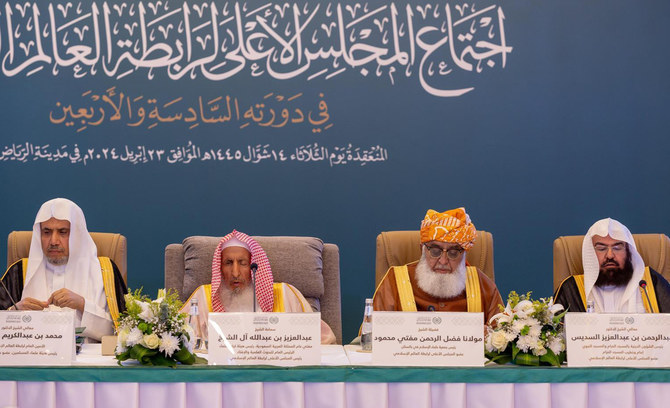
- Al-Sudais acknowledged the grand mufti’s efforts in addressing contemporary issues facing Muslims
- He praised the Muslim World League’s commitment to fostering moderation and moderate thinking
RIYADH: Sheikh Abdulrahman Al-Sudais, head of the Presidency of Religious Affairs at the Grand Mosque and the Prophet’s Mosque, praised King Salman and Crown Prince Mohammed bin Salman for their dedication to the message of Islam.
He commended their promotion of tolerance and moderation, service of Islam, Muslims and the broader Islamic community, and advocation for Islamic world issues in international forums.
In his speech at the Muslim World League meeting in Riyadh on Tuesday, Al-Sudais expressed his gratitude to the grand mufti of the Kingdom, Sheikh Abdulaziz Al-Asheikh, for his role in supporting the Islamic Fiqh Council’s mission.
Al-Sudais acknowledged the grand mufti’s efforts in addressing contemporary issues facing Muslims, encouraging inter-civilizational dialogue and promoting the values of tolerance.
He also highlighted the role and contributions of Muslim World League Secretary-General Dr. Mohammed bin Abdulkarim Al-Issa in promoting the values of moderation and inclusivity, encouraging interfaith dialogue and serving the league’s mission.
Al-Sudais praised the Muslim World League’s commitment to fostering moderation and moderate thinking, fulfilling Islam’s mission to spread peace and justice, and encouraging familiarity and cooperation among peoples.
He acknowledged the league’s efforts in organizing international conferences and awareness programs, and its role in combating religious extremism.
Al-Sudais highlighted the importance of combating misguided ideologies and terrorist organizations, focusing on the youth, supporting Islamic minorities, combating fanaticism, factionalism and moral decay, and upholding the values of tolerance and moderation.
Madinah forum targets improved pilgrim experience
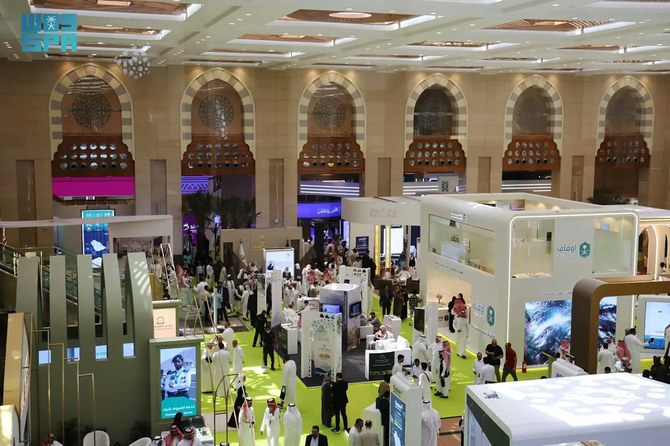
- The 3-day event explores new opportunities for Hajj and Umrah services
JEDDAH: The Ministry of Hajj and Umrah, in collaboration with the Pilgrim Experience Program, organized the inaugural Umrah and Ziyarah Forum at the King Salman International Convention Center in Madinah.
The three-day event, taking place from April 22-24, is being held under the patronage of Prince Salman bin Sultan, the governor of the Madinah region.
Prince Salman said that the leadership has prioritized the enhancement of Hajj and Umrah services during the prosperous era of King Salman and Crown Prince Mohammed bin Salman.
He said: “The great honor bestowed by God on this country is a source of pride for all of us and motivates us to improve the level of services provided to the guests of God, to search for ideas, and to conduct studies that would advance the Umrah and visit sector.”
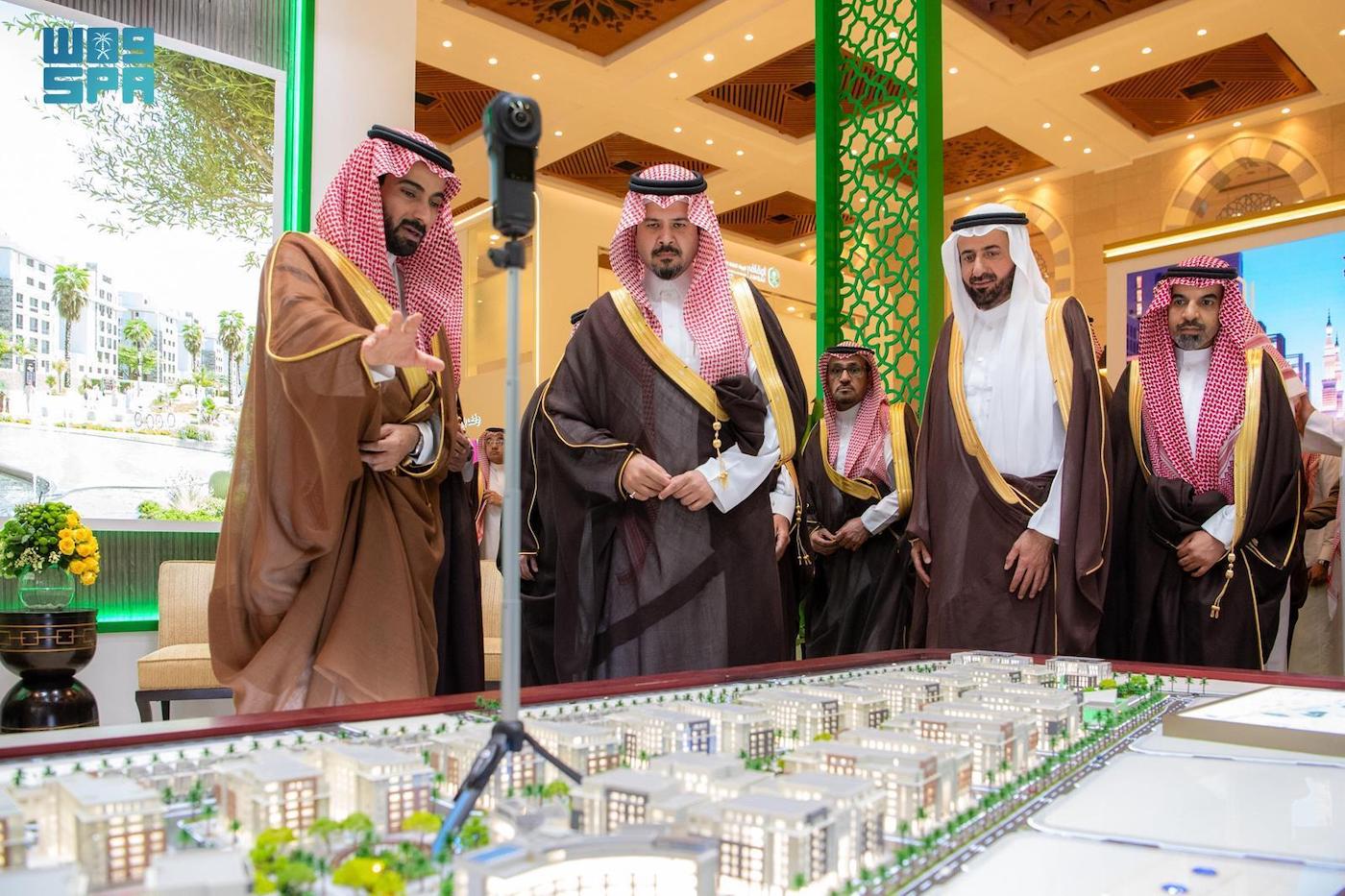
The forum is an opportunity for specialists to communicate and exchange experiences during dialogue sessions and discussion panels, and to develop recommendations that contribute to enriching visitors’ experience, he added.
He also expressed hope that the forum would yield positive outcomes and thanked the minister of Hajj and Umrah, Tawfiq Al-Rabiah, as well as the ministry’s employees, for organizing the forum.
Prince Salman visited the exhibition held in parallel with the forum. It houses more than 100 pavilions showcasing the services offered by tourism and travel companies, Umrah agencies, academic and research institutions, small and medium enterprises and service developers, as well as companies from related sectors such as hospitality, catering, transportation, healthcare, technology, communications, artificial intelligence, banking and insurance.
A documentary about Madinah, an essential component of the Umrah experience, was screened at the forum.
A group of experts and specialists attended, with discussions focused on enriching the Umrah and Hajj experience and aligning with the goals of Vision 2030.
Al-Rabiah also delivered a speech at the forum, highlighting the special attention given by the leadership to the Two Holy Mosques and visitors to the sites.
One of the most important factors in the Kingdom’s Vision 2030, Al-Rabiah said, is the Pilgrim Experience Program, as the Two Holy Mosques are expected to witness the influx of millions of worshippers and visitors, requiring management by security personnel from the Ministry of Interior, and from the General Authority for the Affairs of the Grand Mosque and the Prophet’s Mosque.
One of the program’s primary goals, he added, is to enrich the visitors’ experience. The forum serves as a comprehensive platform where 180 speakers from the Kingdom and abroad can discuss strategies to improve the experience.
Al-Rabiah highlighted the involvement of 28 government entities and more than 3,000 local and international companies, with more than 1,500 agreements expected to be signed over the course of the event.

He noted that visits were made to 24 countries to address challenges faced by pilgrims and visitors, and to introduce them to the facilities provided by the Kingdom.
Al-Rabiah said that over the past two years, more than 19 million people have visited Al-Rawda Al-Sharifa, along with a significant number of unique historical sites connected to the life of the Prophet Muhammad in Makkah and Madinah, with many of the historical sites having been rehabilitated.
He highlighted the ministry’s commitment to providing quality services throughout pilgrim journeys, describing the Grand Mosque as a globally significant destination. Additionally, he announced the launch of the 1966 contact center in nine languages for pilgrim inquiries, catering to both domestic and international audiences.
Fahd bin Mayouf Al-Ruwaili, the ambassador of Saudi Arabia to France and Monaco, and the permanent representative of the Kingdom to UNESCO, also gave a speech highlighting the role of historical and cultural sites in enriching the visitor experience.
During his address, Al-Ruwaili referenced remarks made by Crown Prince Mohammed bin Salman during the previous Hajj season, emphasizing the Kingdom’s honor in serving the Two Holy Mosques and making it a top priority.
The crown prince’s comments demonstrate the Kingdom’s leadership goals toward serving pilgrims, enabling them to perform their worship rituals and achieve the purposes of Hajj, Umrah, or visitation with ease and peace of mind, he added.
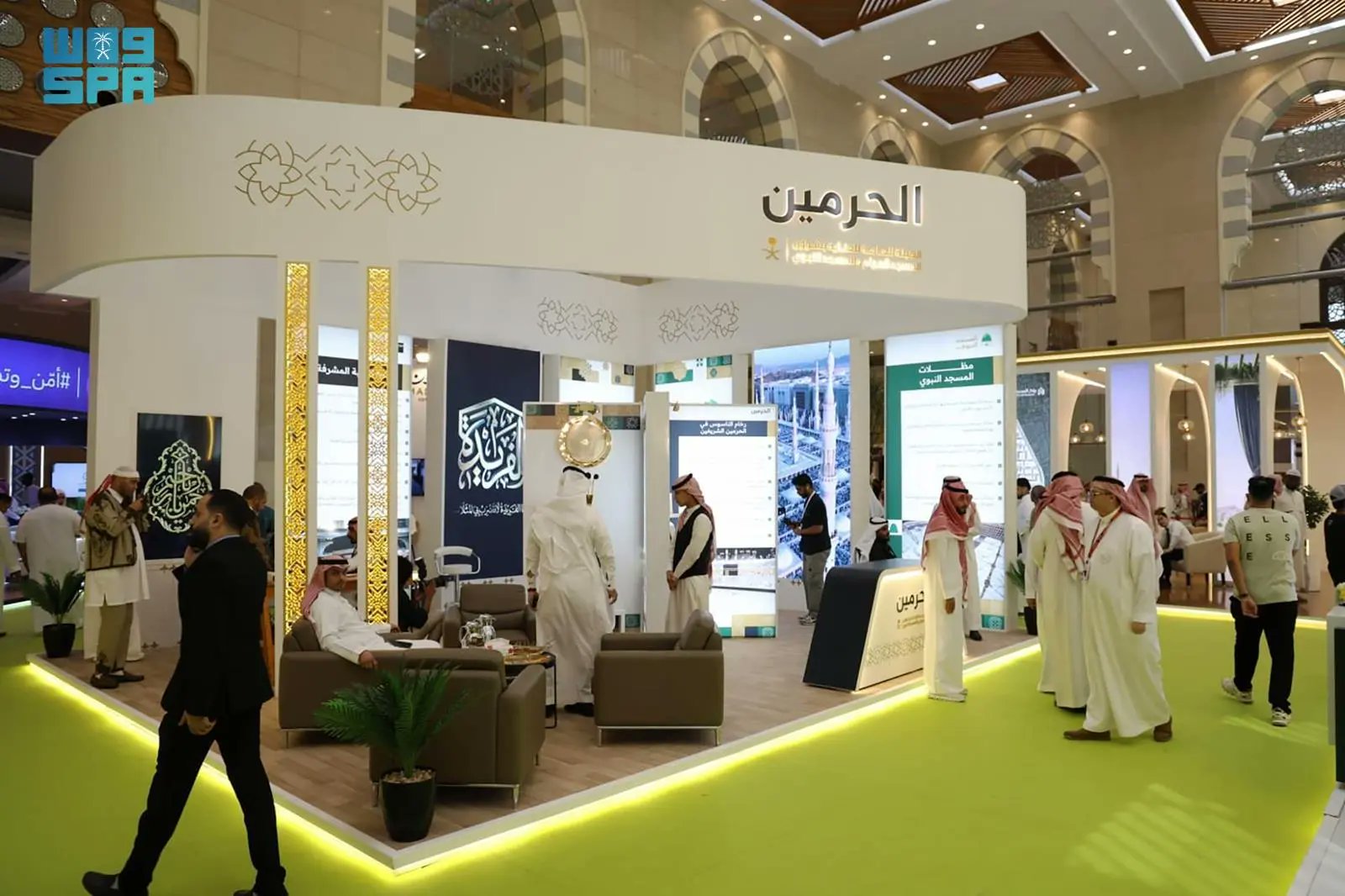
Four significant agreements were signed during the opening ceremony.
The first, between the General Authority for the Affairs of the Grand Mosque and the Prophet’s Mosque and Nusuk, aimed to establish and operate an awareness center for pilgrims.
The second, with the Prince Mutaib bin Abdulaziz Charitable Foundation, created a fund of SR100 million ($26 million) for water supply.
The third agreement, between the General Authority for Awqaf and the Madinah Region Development Authority, focused on repairing and renovating water facilities at the Meeqat of Dhul-Hulayfah.
The fourth agreement, between the General Authority for Awqaf and the Taybah Mosques Association, addressed support for the Quba Mosque’s needs.
The forum consists of six dialogue sessions and 24 workshops, in which 29 experts and specialists will take part. It also includes several competitions, including the Artificial Intelligence Competition in Umrah and a hackathon on historical sites related to the Prophet Muhammad’s life.
Riyadh to host first National Afforestation Forum
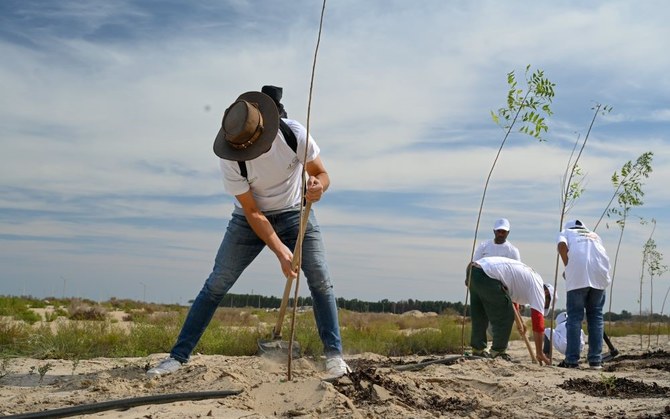
- Forum aims to unify national efforts across various sectors
- It will address the complexities of nursery development, international afforestation initiatives, challenges confronting seed banks
RIYADH: Saudi authorities are preparing for the inaugural National Afforestation Forum on May 6 in Riyadh.
The event, organized by the National Center for Vegetation Development and Combating Desertification under the theme “Towards a Green Future,” seeks to consolidate national efforts across the public, private and non-profit sectors, and integrate strategies to help meet the objectives of the Saudi Green Initiative, including the target of planting 10 billion trees across the Kingdom.
Organizers said their aim is to engage with a diverse audience of all ages that includes sector-specific professionals, environmental activists, and the general public to help promote afforestation efforts in the Kingdom, encourage participation from all sectors, facilitate the sharing of information, foster collaborative efforts, and showcase investment opportunities within the environmental sector.
The forum will include sessions designed to support efforts to expand green spaces and develop vegetation, covering topics such as the benefits of the National Afforestation Program, environmental sustainability, economic growth, and nature-based solutions. Participants will review significant local and international afforestation projects, explore the latest developments in seed banks and nurseries, and consider the challenges in these areas.
Organizers added that the ultimate aim is to enhance community engagement through improved stakeholder collaboration and effective management of the seed and tree supply chain to optimize planting outcomes.
Cairns continue to be silent guides in the desert

- Used as resting spots, mark water sources for Bedouins, travelers
- Some documented including for Hajj route from Kufa to Makkah
RIYADH: Cairns, known as “rjum” in Arabic, are more than just heaps of stones scattered throughout the desert but have served as important landmarks and silent guides for Bedouins and travelers through the years, and will continue to do so, according to a local heritage researcher and archeologist.
Shaped as pyramidal or circular heaps of stones, cairns mark valleys, ravines and deserts across the region. Their strategic placement atop hills or elevated ground provides a vantage point for hidden landscapes, said Abdulrahman Mohammed Al-Tuwayjiri, from the Rafha governorate, in an interview published by the Saudi Press Agency on Tuesday.
Bedouins revere cairns, which aid in visual exploration and have served as places of contemplation for lovers and poets over the years, said Al-Tuwayjiri.
Each cairn has its unique features, with some bearing names, possibly attributed to their builders or reflective of specific geographical locations. The care and preservation of cairns remain a priority for the Bedouin community, ensuring that their legacy endures for generations to come.
Al-Tuwayjiri said these landmarks are constructed using stones of varying sizes with diameter, as well as height, between 2 and 3 meters. However, over time many have deteriorated and now measure about 1 to 2 meters in height. Some cairns have become mere piles of fallen stones along the roadside.
Abu Ishaq Ibrahim Al-Harbi, an early geographer, documented the landmarks and mile markers that guided Hajj pilgrims from Kufa to Makkah. These landmarks were spaced approximately 2 km apart, with closer intervals at road intersections and divergences to ensure that travelers maintained their direction.
Cairns were typically built on natural hills and elevations to ensure they were visible from a distance.
Cairns serve a variety of purposes beyond just guiding travelers. These silent stone structures are often designated resting areas for weary explorers on long journeys, function as gathering points for nomadic tribes, and can indicate the presence of water.


